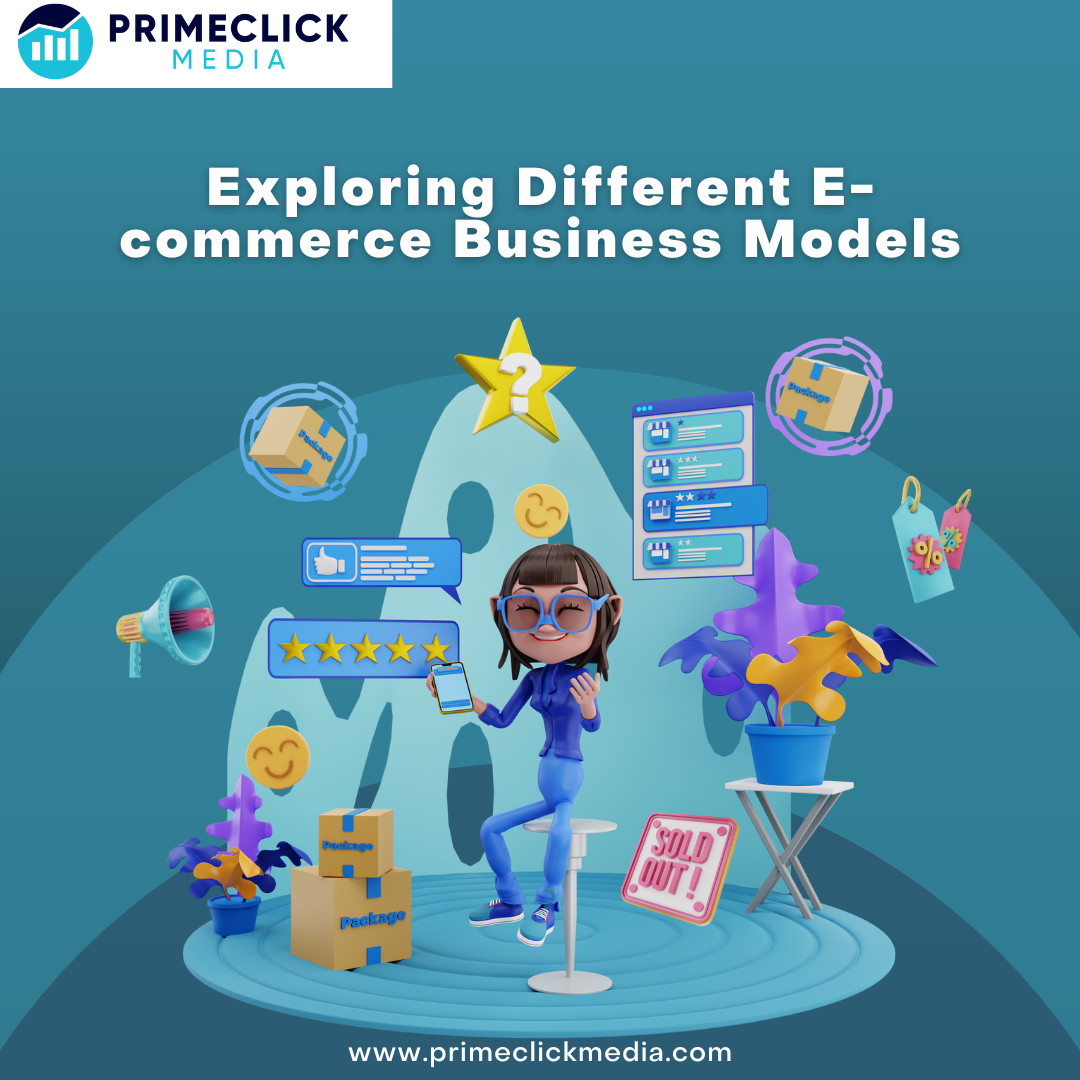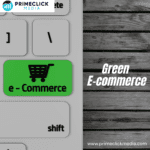E-commerce, or buying and selling things online, has become a big part of our lives. But did you know that there are different ways people can do business online? Let’s take a closer look at some of these ways: dropshipping, wholesaling, and more.
What is E-commerce Business Model?
An e-commerce business model refers to the strategy and structure that a business uses to buy and sell products or services over the Internet. It outlines how the business operates online, from sourcing products or creating services to presenting them to customers and completing transactions.
Different e-commerce business models determine factors like how products are stocked, marketed, and delivered to customers, as well as how revenue is generated. There are various types of e-commerce business models, including dropshipping, wholesaling, subscription-based services, white labeling, and more. Each model has its unique approach to conducting online commerce and meeting customer needs.
Why E-Commerce Business Model is Important?
The e-commerce business model is important for several reasons:
- Global Reach: E-commerce allows businesses to reach customers beyond their geographical location. This opens up a larger customer base and the potential to sell products or services to people around the world.
- Lower Costs: Traditional brick-and-mortar businesses often come with high overhead costs such as rent, utilities, and physical store maintenance. E-commerce businesses can operate with lower costs as they don’t require physical storefronts.
- Convenience: E-commerce offers convenience for both businesses and customers. Businesses can operate 24/7 without time limitations, and customers can shop whenever they want from the comfort of their homes.
- Wide Product Range: E-commerce allows businesses to offer a wide range of products or services without the constraints of physical shelf space. This can attract a diverse customer base and cater to various needs.
- Data Analytics: E-commerce platforms provide tools to track customer behavior, preferences, and purchasing habits. This data can be used to make informed decisions, tailor marketing strategies, and improve the overall customer experience.
- Personalization: E-commerce businesses can use customer data to personalize shopping experiences, recommend products based on past purchases, and offer targeted promotions, enhancing customer satisfaction.
- Flexibility: E-commerce business models are adaptable. Businesses can quickly introduce new products, test different marketing strategies, and make changes based on real-time data.
- Accessibility: E-commerce breaks down barriers for people with physical disabilities, making it easier for them to shop online and access a wide variety of products.
- Scalability: E-commerce businesses have the potential to scale rapidly without the need for significant physical expansion. As demand grows, businesses can adjust their operations accordingly.
- Innovation: E-commerce encourages innovation in areas like user experience, payment methods, and supply chain management. Businesses are pushed to stay up-to-date with technological advancements to stay competitive.
- Reduced Intermediaries: Some e-commerce models, like direct-to-consumer, reduce the need for intermediaries, allowing businesses to have more control over the customer experience and pricing.
- Market Expansion: E-commerce allows businesses to enter new markets and test the waters without the need to establish a physical presence immediately.
Types of E-Commerce Business Models?
There are several types of e-commerce business models, each with its approach to buying and selling products or services online. Here are some common types:
- B2C (Business-to-Consumer): This is the most familiar type of e-commerce, where businesses sell directly to individual consumers. Online retailers, such as Amazon and Walmart, operate under this model.
- B2B (Business-to-Business): In this model, businesses sell products or services to other businesses. It involves bulk orders and often long-term business relationships. An example is a company that sells office supplies to other companies.
- C2C (Consumer-to-Consumer): C2C platforms enable consumers to sell products or services to other consumers. Platforms like eBay and Etsy allow individuals to set up their online stores and sell to a broader audience.
- C2B (Consumer-to-Business): This model is the reverse of B2C. Consumers offer products or services, and businesses purchase them. For example, freelancers offer their skills on platforms like Upwork or Fiverr.
- D2C (Direct-to-Consumer): This model involves brands selling their products directly to consumers, bypassing traditional retail channels. D2C brands often emphasize building direct relationships with customers and controlling their brand image.
- Dropshipping: In dropshipping, the retailer doesn’t keep products in stock. Instead, when a customer makes a purchase, the product is shipped directly from the manufacturer or supplier. The retailer doesn’t handle inventory or shipping.
- Wholesaling: Wholesalers buy products in bulk from manufacturers and sell them to retailers at a lower price. The retailers then sell the products to consumers. It’s a key part of the supply chain.
- Subscription-based: Businesses offer products or services on a subscription basis, where customers pay regularly to receive items or access services. Examples include subscription boxes for beauty products, streaming services, and software-as-a-service (SaaS) models.
- White Labeling: White labeling involves taking a product created by one company and rebranding it as your own to sell. This is common in industries like cosmetics, software, and electronics.
- Affiliate Marketing: In this model, individuals or businesses promote other companies products or services and earn a commission for each sale or lead generated through their marketing efforts.
- Crowdfunding: Crowdfunding platforms allow individuals or startups to raise funds for their projects or products by getting pledges or pre-orders from interested consumers.
- Rental or Sharing Economy: Platforms like Airbnb and Uber are part of the sharing economy. Individuals rent out their property or provide services to others through online platforms.
- Manufacturing or Print on Demand: Businesses create custom products based on customer specifications. Print-on-demand services, for instance, allow customers to design and order custom products like T-shirts or mugs.
- Brick-and-Click: This is a hybrid model where businesses have both a physical store and an online presence. Customers can shop either in-store or online, providing them with more options for convenience.
These e-commerce business models cater to various needs and preferences, offering flexibility for entrepreneurs and providing diverse options for consumers.
Examples of Common E-commerce Business Models
1. Dropshipping: Selling Without Keeping Stock
Imagine having a store where you sell things, but you don’t have those things in stock. That’s what dropshipping is all about. Here’s how it works:
You set up an online store and partner with suppliers who have the products you want to sell. When a customer buys something from your store, you simply buy it from your supplier, and they ship it directly to the customer. You don’t need to worry about storing the products or shipping them yourself.
Dropshipping is great for people who want to start a business without a lot of upfront costs. You don’t need to invest in inventory, and you can run your store from anywhere with an internet connection.
2. Wholesaling: Buying in Bulk
Wholesaling is like buying in bulk. Imagine you want to sell a certain product, like phone cases. Instead of buying just a few phone cases, you buy a large number of them at a lower price per piece.
Then, you sell these phone cases to retailers or even directly to customers. Wholesaling is a bit different from dropshipping because you need to handle storing the products and shipping them to your customers. It’s great if you have the space to store products and want more control over the shipping process.
3. Subscription Models: Predictable Sales
Subscription models are another cool way to do e-commerce. With this model, customers sign up to receive products regularly. For example, you could start a subscription box service where customers get a surprise package every month.
This way, you have a steady flow of income because customers pay for their subscriptions regularly. It’s important to offer unique and valuable products to keep customers excited about getting your subscription boxes.
4. White Labeling: Making Someone Else’s Products Your Own
White labelling is like putting your label on a product someone else has made. Let’s say there’s a company that makes amazing organic soaps. You can partner with them, put your brand name on the soaps, and sell them as your own.
This can be a great option if you want to sell high-quality products without going through the process of creating them from scratch. It’s like you’re using someone else’s recipe to make delicious cookies and selling them as if you baked them yourself.
5. Handmade and Crafted: Personal Touch
If you’re a crafty person who loves making things by hand, this model might be perfect for you. You create unique, handmade products like jewellery, candles, or artwork, and sell them online. People love buying things that are made with care and have a personal touch.
In this model, you’re not just selling products; you’re selling your creativity and the love you put into making each item. It’s a great way to connect with customers who appreciate handmade goods.
Conclusion
E-commerce has opened up a world of opportunities for people to start their businesses online. Whether you’re into dropshipping, wholesaling, subscriptions, white labelling, or crafting handmade goods, there’s a business model that can fit your interests and skills. The key is to choose the one that aligns with your goals and provides value to your customers. So go ahead and explore the exciting world of e-commerce business models!





